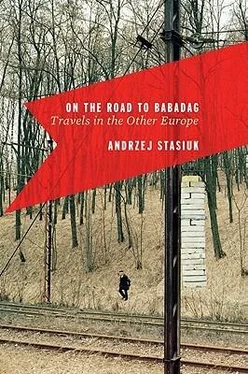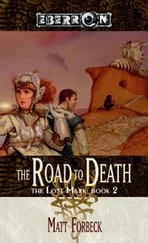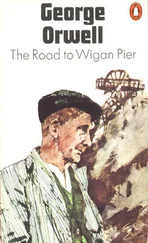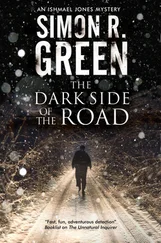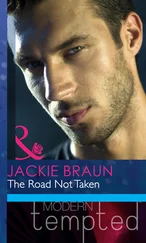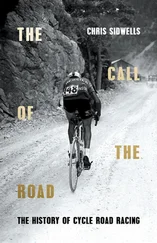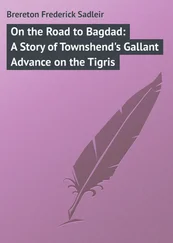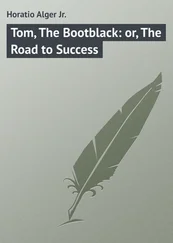But that was long ago. Now the few brethren lived in a village at the base of the cliff. We found one monk in a small chapel dug out of the earth. He was gaunt, bearded, voluble, and evidently conversant with the world, because he took us for Slovaks. He gave us a summary of the history of the monastery, showed us the clean-swept cells without windows in which you had to bend, then turned to three officers from the Russian, Moldovan, and Ukrainian armies, respectively. They looked out of place in their uniforms, holding cameras instead of rifles. The Russian, in an aviator hat, was the oldest and seemed to have the highest rank. The Ukrainian, the youngest, handsome, and wearing mirror sunglasses, looked like a Hollywood actor playing a soldier. They were quite odd in this timeless landscape, with this monk in the role of guide. Later we saw them having their picture taken with the cliff and the twisting Răut behind them. They handed the camera around and stood taut, as if facing not a barren waste but a battalion at least. These were peacekeepers patrolling the border of a nonexistent country, patrolling Transnistria, Trans-Dniester. They were probably on leave here.
Transnistria is not recognized by any government. It has a length of about two hundred kilometers but is narrow, a kind of European Chile. Thirty kilometers, maybe, at its widest point. We were a little nervous about going there. They told us that if anything happened, it wouldn't be clear who to talk to. In a phantom state, the etiquette is phantom too. We went anyway. Valerij drove us in a ten-year-old Vectra. Valerij feared nothing: yesterday Kiev, tomorrow Moscow, Vienna the day after that, and Transnistria — sure, why not? The Communist time, when he worked as an agrotech engineer, was better, but you could manage now too, you just had to make the effort. Valerij was all right and took everything in stride. We wanted to see the nonexistent country at its most out-of-the-way, going through RăscăeieŢi, because the Dniester divided there, its branches meandering, weaving, a blue ribbon thrown at random across the map. First, a long, empty bridge and not a single vehicle, only two kids on bicycles from the Transnistrian side. In their baskets they carried tied bundles of twigs. Then cornfields began, and in the midst of them stood a sentry box with a solitary Moldovan customs officer in a black uniform. Moldova obviously does not accept the secession of this would-be state, according it only the status of an autonomous region. Since the border also is unrecognized, we didn't need to show passports. But Moldova keeps its customs officers on duty just in case. After all, it's in Transnistria, at Cobasna, that you have one of the largest ammunition depots in Europe. From there, from Tiraspol, the Soviets planned to launch their liberation of the Balkans, Greece, and so on.
The customs officer didn't want anything from us. He didn't even put on his cap as he consulted the road map with us — all the river's bends and turns, marshes and lakes, the stream occasionally looping back — spread out on the hood of the car. He tapped a finger and said that this place was the best, but our Vectra probably couldn't make it there. Not a blink from him at our camera or camcorder; the man was in his early twenties, and the spy obsession had not yet poisoned his mind. He waved as we left. When we came to another Transnistrian sentry box, the situation changed: the same kind of makeshift hut but containing four guards. These men were disheveled, in uniform but as if just pulled out of bed and half asleep. Their shoelaces (the shoes entirely civilian) dragging in the dust, their post-Soviet shirts and trousers crumpled, their solemnity quickly assumed. The moment they took our passports, we felt that we were enemies. They wouldn't look us in the eye, looked up instead, at the sky, to the limitless horizon of an all-union republic gone forever. Could this really be the first time they set eyes on a foreigner? In the next dozen minutes, a wagon with hay went by, a woman with a hoe. The wagon and woman passed without questions asked and were gone among the rows of corn. At last the guards told us to go back, to the town of Bender, where the headquarters were, and people who would know what to do with us.
On the thoroughfare in Bender, a shambles: barracks, plywood, corrugated metal, crumbling concrete, makeshift structures, barriers. Dissolution and melancholy with an undercurrent of menace. First thing, they saw the camcorder, which roused in them the primal fear of those who have something to hide. They said we were filming the border crossing. Of course we were, but we insisted we weren't. They took our passports, and three or four went with them into the plywood hut. We were left out in the burning sun. A. was covered with sweat. He sat on the edge of an open car trunk and slowly, inconspicuously removed the cassette from the camcorder and put a new one in. No one noticed. Occasionally a guard emerged from the hut, glared at us, and retreated with a few stiff steps. No question but that we were the enemy, lurking to take their possessions. They kept our passports, which they couldn't even stamp, assuming they had a stamp, because no nation would recognize it.
Valerij finally went to the guards. After a while he came back and said that they knew we were filming, which was a serious matter and forbidden, but for a hundred lei we could move on. We gave them the money. They didn't want the cassette. We were the enemy, but we had paid. We received a scrap of paper, a kind of receipt. On the back was written, in pen: one car, four persons, and a camcorder. That was our Transnistrian visa.
Transnistria broke away from Moldova in 1992. It was a regular war; several thousand people died. Historically Transnistria had never really belonged to Moldova. When after World War II the Soviets took from Romania the lands between the Prut and the Dniester and turned them into yet another SSR, Stalin attached to the Moldovan SSR this narrow strip on the left bank of the Dniester. There was industrialization there, a power plant, an arms factory — and obviously the Russians, who kept their paws on it all. Across the river were farms, cornfields, vineyards, a village, cattle, and Moldovans speaking Romanian. It's not impossible that the Georgian ruler foresaw all this and planned accordingly, making sure that the collapse of his aborted empire would cause as much trouble as possible. He simply had no other idea about how to be remembered. And so in Transnistria there were too many weapons and too many Russians for an independent, green, and poor Moldova to do more than dream of acquiring Transnistria.
From the border to Tiraspol it may have been ten kilometers. There are landscapes and towns that are impossible to recall. You seem to see something, but it's all vague, dull, as if you were inside someone else's oppressive dream. There's nothing there. Two lanes, gray square houses, the gaunt red of Soviet slogans along the road, rusty Zhigulis with new license plates that pretend to be German license plates: the ground floor of the imagination. That's what the ride to the capital looked like. We stopped at a bazaar. I wanted to see what their money looked like. Right at the gate, the exchange booths. One simply went in and gave Moldovan lei to a person in the dim interior. I saw no face, only a hand with a gold bracelet. For one leu you got two Transnistrian rubles. A five-ruble bill measured five and a half centimeters by thirteen. On the front, naturally, was Suvorov; on the back, a four-story building in the style of the 1960s, at the bottom of which were the words Kwint Factory, the local producer of cognac (which actually wasn't bad). So on the front you had history, conquest, the Slaughter of Praga, the glory of the Russian military — a glory mainly abroad — and on the back you had booze (however you looked at it) as government accomplishment or national pride.
Читать дальше
